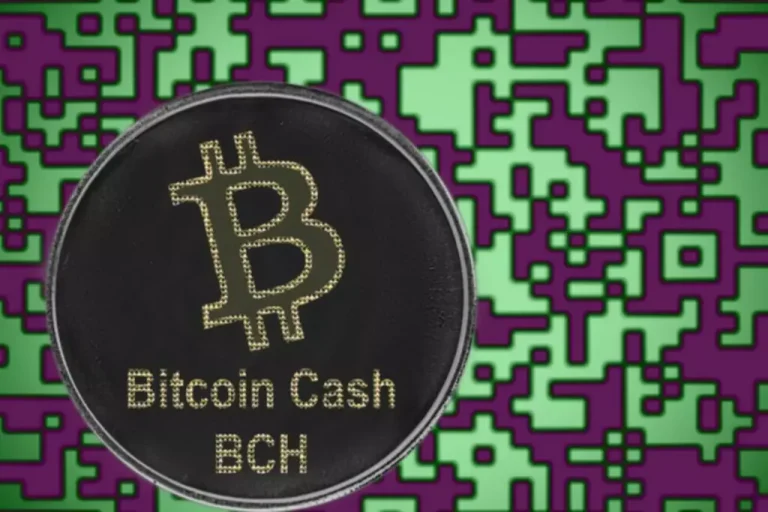Benefits of Blockchain: Faster Payment Processing Amex US
Content
Many healthcare systems are still battling with data silos that negatively impact patient care. Implementing a Cryptocurrency exchange blockchain in healthcare systems for electronic medical records (EMRs) addresses this problem. The supply chain process is transparent and traceable through blockchain in healthcare. It can easily track pharmaceuticals and medical supplies from production to delivery. Each step of the supply chain process is recorded on the blockchain, ensuring that all parties have access to accurate information about the products. The application of blockchain in healthcare facilitates automated consent management through smart contracts that prioritize patient preferences without requiring continuous manual oversight.
Blockchain for E-commerce: Uplift Online Shopping Security
Slow processing times, hefty fees, and a reliance on third-party intermediaries can leave both businesses and consumers frustrated. Considering the aforementioned blockchain payment systems and solutions, it is clear that this technology offers numerous benefits. The most significant are a higher level of payment security, improved transaction transparency, increased speed blockchain for payments of payment execution, and enhanced cost efficiency. Overall, blockchain technology is transforming the way we conduct transactions by providing a secure, transparent, and efficient platform.
Overcoming the Challenges Associated with Blockchain Payment Systems
You can even loan your bitcoin to others using decentralized finance applications and charge interest. Positive changes in market value allow you to make money when you sell it for more than you purchased it for. However, no matter how it is used, there is still a genuine risk of losing significant amounts of https://www.xcritical.com/ capital.

Pros and Cons of Investing in Bitcoin

Among many industries that blockchain has transformed so far, the payments and finance industry has been behind the hype. Lately, as the world is undergoing the digital evolution, the payments industry has adopted many ingenious technologies to ease out payment procedures. Blockchain technology holds immense potential to transform the way we conduct payments. Interoperability between different blockchain networks and traditional payment systems can be a challenge. Ensuring compatibility and seamless integration with existing infrastructure, such as legacy payment systems, is crucial to foster wide-scale adoption.

Although blockchain offers users many benefits, businesses still should estimate if their customers are ready to adopt the new, blockchain-based form of payment. A key reason for incorporating blockchain in payment systems is its ability to rapidly process transactions, irrespective of the geographic locations of the involved parties. The algorithms used in blockchain make sure the integrity of the overall system remains intact even if some nodes are compromised. This makes it extremely difficult for hackers to alter or access sensitive information without getting detection. Blockchain in healthcare also provides a secure environment for storing large datasets at lower costs than traditional methods. This level of transparency strengthens trust between patients and providers and ensures compliance with regulatory requirements regarding data handling.
Following data privacy regulations ensures user information is handled responsibly. Finally, thorough vetting and testing of any third-party integrations are crucial. By implementing these measures, we can strike a balance between transparency and user privacy, fostering trust and wider adoption of blockchain payment systems.
When bitcoin is assigned to an owner via a transaction on the blockchain, that owner receives their private key. Your wallet has a public address—called your public key—that is used when someone sends you a bitcoin, similar to the way they enter your email address in an email. For any e-commerce business to succeed, the supply chain should be transparent and effortless. An efficient and transparent supply chain helps Ecommerce track their products, manage inventory, track product distribution, and identify thefts, and lost products.
In industries where consumers are concerned about environmental or human rights issues surrounding a product—or an industry troubled by counterfeiting and fraud—this helps provide the proof. Governments and regulators are still working to make sense of blockchain — more specifically, how certain laws should be updated to properly address decentralization. While some governments are actively spearheading its adoption and others elect to wait-and-see, lingering regulatory and legal concerns hinder blockchain’s market appeal, stalling its technical development. By recording every step of a product’s journey on the blockchain, stakeholders can verify authenticity, reduce counterfeiting, streamline logistics, and build trust among participants.
The main advantage of using the blockchain payment method is the strength of security over the traditional payment methods. Blockchain transactions are encrypted so no third person can interfere in the transaction process. In contrast, in conventional transaction methods, the transaction involves the intermediate firm, the weak link in the security chain. By automating business processes, they can remove friction between organizations, reduce operating costs and speed transactions. As blockchain networks grow in popularity and usage, they face bottlenecks in processing transactions quickly and cost-effectively. This limitation hampers the widespread adoption of blockchain for mainstream applications, as networks struggle to handle high throughput volumes, leading to congestion and increased transaction fees.
Your data is sensitive and crucial, and blockchain can significantly change how you view your critical information. By creating a record that can’t be altered and is encrypted end-to-end, the blockchain helps prevent fraud and unauthorized activity. This section provides a brief introduction to four different models that have developed by demand. Smart contracts are self-executing protocols that automate transaction verification. In addition to reducing human error, their function is to facilitate decentralization and create a trustless environment by replacing third-party intermediaries. Each block contains stored data, as well as its own unique alphanumeric code, called a hash.
- Businesses can use Shopify’s integration with blockchain-based solutions for tracking product authenticity and ownership.
- Finally, thorough vetting and testing of any third-party integrations are crucial.
- Folio3 Digital Health is among the leading providers of innovative, custom healthcare solutions tailored to seamlessly integrate your existing systems.
- This transparency fosters trust, accountability, and efficient auditing, as transactions can be traced back to their origin.
- This decentralized structure increases trust among participants and reduces the risk of fraud and manipulation.
A hash is the result of sending block data through a hashing algorithm, which outputs a fixed-length sequence of numbers and letters no matter the size of the data sent through it. These hashes are in hexadecimal format, which means they can be converted to a numerical value. Smart contracts are self-executing contracts that execute automatically when a certain condition is met.
This demonstrates the potential for seamless integration of crypto payments into existing retail infrastructure, paving the way for broader adoption in the future. If you are considering incorporating blockchain into your payment systems, PixelPlex blockchain development company can help you navigate this complex landscape. On top of this, blockchain employs advanced cryptography to enhance transaction security. Each transaction is encrypted using intricate algorithms, making them next to impossible to decipher without the correct keys. Utilizing blockchain in royalty payments offers transformative benefits to artists, creators, and publishers.
Read how blockchain provides these benefits to learn more about using blockchain in your industry. He said blockchain-based applications also benefit from being paired with artificial intelligence, machine learning or some other decision-making layer. They underscored that blockchain’s true value comes when it’s used in areas where a conventional database won’t work and central control and trust aren’t present. Early implementations of blockchain have exposed some of the technology’s disadvantages and challenges as well, experts cautioned. If you plan to use a crypto-payment gateway, or Stellar or Ripple, you can set them up conveniently to send and receive crypto payments.
So when a transaction is taking place among two peers, all nodes take part in validating the transaction using consensus mechanisms. These built-in protocols keep all in-network nodes in agreement on a single data set. No blocks can be added to the blockchain until it is verified and has reached consensus. Luckily, this step has been sped up with the advent of smart contracts, which are self-executing programs coded into a blockchain that automate the verification process.
Exploring alternative consensus algorithms, such as Proof of Stake (PoS) or energy-efficient blockchain designs, can help mitigate these concerns and reduce the carbon footprint of blockchain-based payments. As transaction volumes increase, public blockchains can become congested and experience slower transaction processing times. Addressing scalability requires implementing solutions such as off-chain transactions, sharding, or layer-two scaling solutions to handle a larger number of transactions efficiently. Blockchain can enhance supply chain financing by providing a transparent and immutable record of transaction histories. Using blockchain, lenders can verify the authenticity of invoices and track the movement of goods throughout the supply chain.

Laisser un commentaire
Rejoindre la discussion?N’hésitez pas à contribuer !